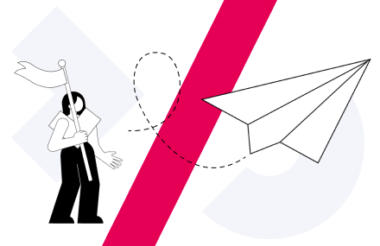For the majority of the third sector, March 2020 to now has marked the beginning of one of the most challenging periods of their existence to date. By June last year, one in ten UK charities faced imminent bankruptcy. Whilst the sector as a whole had racked up an income shortfall of £10bn - a fifth of its overall annual income.
Such unprecedented macro-economic pressures have driven many charities to restructure. The ability to adapt quickly - in other words, be agile - is now a key business differentiator. And as we move further into a hybrid, part-remote, part-in-person service-based industry, plenty is still set to change.
For those organisations that hadn't invested in digital prior to the pandemic, the lockdown-induced shift to screen-only communication has provided them with the impetus to make change happen.
The agile opportunity
So, what began as disruption quickly turned into an opportunity for the third sector to rebuild itself. It saw nonprofits re-evaluate their charitable purpose and impact. From their people, to their culture, processes, systems, all the way to their frontline programmes.
Now, with organisations emerging out of survival mode alongside the easing of UK lockdown restrictions, it's time for charities to take a step back and reflect on what they've created. Is it built to last? Or was it a quick fix?
A good measure of this is to look at how, if at all, agile methodologies and mindset feature in your workplace. How easy is it to make incremental improvements? If your organisation has cultivated an environment ripe for agile ways of working, then it's far more likely to succeed in a world where digital capabilities, maturity, and scaling are happening at a faster rate than ever seen before.
There's still time to turn the ship around
It's no secret that the third sector has, en masse, trailed behind other industries when it comes to digitalisation. Charities' ingrained structures, lack of digital expertise at board level, and limited access to funding have left little or no room for their teams to reap the rewards of online innovation.
But then the global health crisis happened. Which meant what was once perceived as an optional extra became an absolute necessity. Without an online presence and a toolkit of digital services to match, charities were - all of a sudden - facing a very bleak future. What many non-profit organisations have therefore realised is that to keep up, adopting modern frameworks, technologies and ways of leading were, and always will be, the keys to survival.
Peter Koning breaks down the approach in his 2019-published book 'Agile Leadership Toolkit'. He discerns it by four key indicators. One is the co-creation of goals versus top-down instructions. Two is giving teams the ownership they need to perform. Three centres around fast learning from accessible feedback. Whilst four hinges on an agile-friendly work culture.
What does this mean for you?
To begin thinking about how your organisation can start implementing an agile workflow better suited to a post-pandemic world, take a moment to zoom out. You might have done this briefly during the pandemic, but the loud, ticking clock likely skewed what you saw and what seemed urgent at the time.
As a leader, both in your organisation and the sector as a whole, it's worth asking yourself how you'd create a culture which empowers and embodies, rather than simply idealises, change. What could you do to free up new ways of working which could embrace true agile leadership?
It's also important to remember that every organisation is different. Which means the definition of agile, and the pathway you trace to digitally mobilising your team, will also be different. That's why it's helpful to map out how your organisation - not anyone else’s - will get there. Looking to others for inspiration is only part of what makes up your eventual agile mindset.
What can you do?
Like everything in life, getting started is the hardest part. One thing I'd advise is looking at the tensions, bottlenecks and waste that happens in your teams and organisation right now. Start to build a backlog of small improvements. Select specific teams to coach and create a baseline understanding of agile practices and methodologies. You could do this by taking an example of an 'as is' process in your organisation, and then re-mapping it to make it more efficient. That way, your teams can better understand how an agile mindset would apply to them.
Once you've created pockets of success in your organisation, work to scale it. Think about the biases that exist in your decision-making processes, work to be authentic leaders and create psychological safety so people can say what they really think. And listen to what they say. These initial points can act as a guide which shapes the culture your organisation goes on to adopt. If everyone has a shared understanding - be that executives, trustees, team leads, and team members - your agile leadership and culture is more likely to come to life authentically.
Louise Lai is transformation director at Manifesto
Related articles
Louise Lai: Fundraising through coronavirus – the impact on the not-for-profit sector
Louise Lai from Manifesto advises charities to use the five levels of the government's alert system to help structure responses to Covid-19










